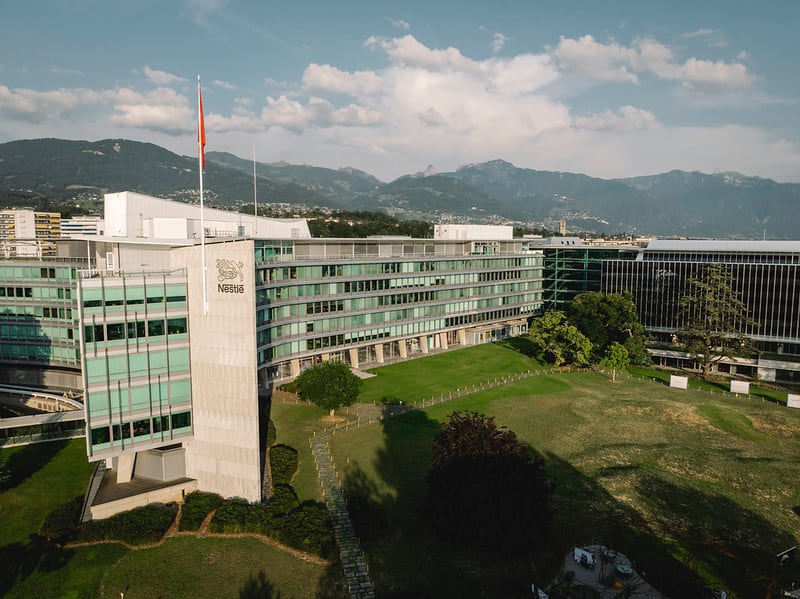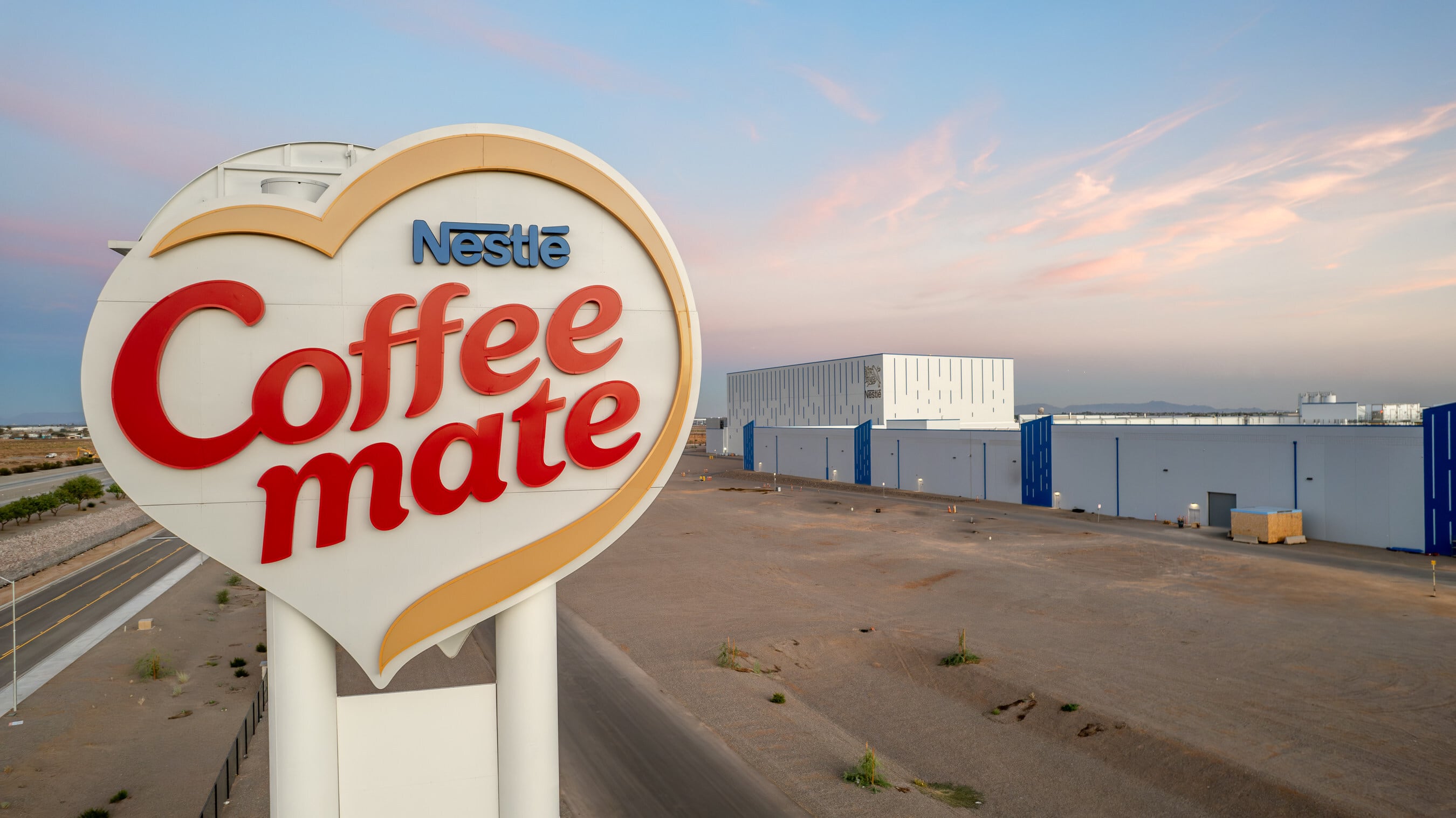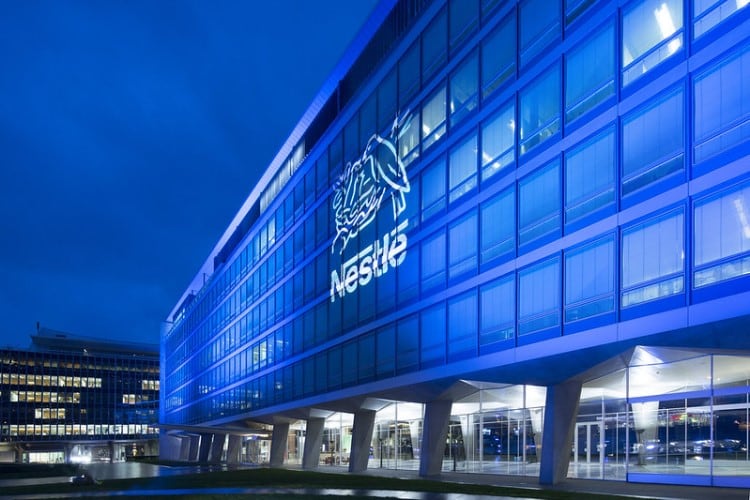In a step towards environmental transparency, Nestlé revealed how much greenhouse gas (GHG) emissions are linked to the company’s use of ingredients – and disclosed the emissions from dairy and livestock.
The global CPG firm also revealed the progress it has made on ingredients-linked methane, carbon dioxide and nitrous emission removals against its 2018 baseline.
The data was published in Nestlé’s latest non-financial statement and marks ‘a vital step forward’ according to climate campaigners The Changing Markets Foundation.
Ingredients and finished goods make up almost two thirds (65%) of Nestlé’s entire scope 3 (indirect) emissions footprint, making this the most significant category of emissions for the business.
Ingredients, e. g. fresh milk, are also where most FLAG (Forest, Land and Agriculture) emissions occur.
Nestlé’s emissions in numbers
Nestlé claims it has removed 20.56% of its methane emissions from ingredients compared to the 2018 baseline. The company says it’s reduced CO2 by almost as much (20.19%), and has cut down nitrous oxide by 13.74%.
Also published for the first time are the company’s scope 3 emissions from dairy and livestock, amounting to 22.41 million metric tons of CO2e for 2024 alone.
Nestlé has decreased its net GHG footprint by 18.69 million metric tons from baseline, meeting its 2025 target of 20% removals a year earlier. Year over year, GHG removals amount to 1.64 million metric tons.
How Nestlé tackled emissions
Just like in 2018, in 2024 ingredients and finished goods were the largest GHG emissions category for Nestlé.
About two thirds (65%) of total emissions reductions were achieved in sourcing, and the remaining - across manufacturing, logistics, recipe management, packaging and removals.
Most (97%) of Nestlé’s FLAG-related removals were achieved through projects such as sourcing from farms that are incentivized to adopt low-carbon farming measures or to improve infrastructure.
In addition, the company now sources 21.3% of key ingredients from regenerative farms, beating its 2025 target of 20% a year earlier and remaining on track to meet its 50% target by 2030.
Responsible sourcing – being able to trace the source of key commodities including dairy and coffee – is another key pillar in Nestlé’s net-zero strategy. The company aims to source all key ingredient volumes responsibly by 2030; in 2024, this figure reached 44.5%.
Manure management and biogas generation
When it comes to emissions from dairy farming and fresh milk ingredients, Nestlé is increasingly leveraging manure management strategies to bolster sustainability.
The company says it produced more than 1,500 tons of biogas from manure and agriculture waste thanks to partnerships with European farmers. Over in Mexico, Nestlé’s dairy farmers are separating manure into liquids and solids.
Notably, the volume of coffee sourced through the Nespresso AAA Sustainable Quality program deceased YoY ‘due to volatility in demand for certain coffee qualities’ which could not be sourced through the program after the harvest period ended, said the company. The number of farmers in the Nestlé Cocoa Plan also declined in 2024.
Changing Markets: Set a science-based target
According to The Changing Markets Foundation’s campaign advisor Lily Roberts, disclosure of Nestlé’s methane emissions is ‘a vital step’ but the company should do more to boost transparency.
The non-profit, which has criticized Nestlé’s lack of methane-specific target in the past, said the food giant should explain how it’s achieved its methane emissions reduction and commit to a target.
“We see Nestlé’s move to begin reporting methane emissions as a vital step forward, but the reported 20% methane reduction figure lacks transparency.
“Our hope is that the company can disclose how it was achieved – and join industry frontrunners, like Danone, in setting a science-based methane reduction target of at least 30% by 2030.
“With Nestlé’s dairy supply chain so reliant on climate stability, we do not believe the company can afford to ignore its corporate responsibility in working collaboratively to keep global temperatures within the 1.5°C limit.”
How Nestlé compares to Danone on methane
In 2023, Danone became the first major food group to adopt a methane-specific target by pledging to reduce methane emissions from fresh milk by 30% by 2030.
The company says fresh milk accounts for 70% of its methane emissions. As a whole, methane comprises 25% of Danone’s full scope emissions and 42% of its agricultural emissions.
When it announced its methane target in 2023, the company said it would measure and report transparently on its progress as part of its extra financial disclosure.
In 2024, Danone reduced methane by 25.30% over its 2020 baseline. Compared to 2023, Danone reduced methane by just under 500 million metric tons CO2e, or 13.90%. Total methane emissions for 2024 were 3,054 million metric tons CO2e vs 3,548 million metric tons CO2e in 2023. Nestlé’s 2024 methane footprint from ingredients was significantly larger, at 13.08 million metric tons CO2e.
In 2024, Danone measured a decrease of over 1 MtCO2e of its milk emissions, notably in AMEA region, as a result of its action plans on milk, divesture of Horizon Organic and favorable weather conditions impacting favorably yields of feedstocks and overall farm productivity.
More generally, the French multi-national methane emissions reduction efforts focus on improving herd and feed management, reducing manure-related emissions, and developing methane inhibitors.



